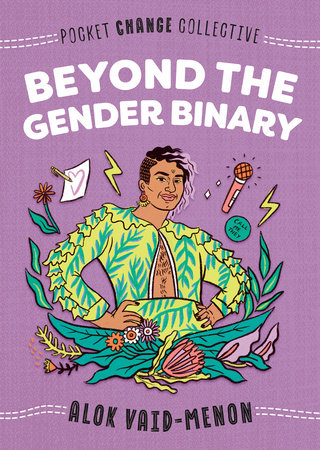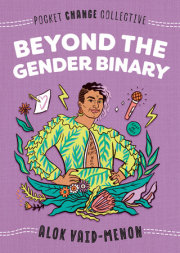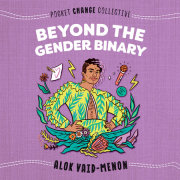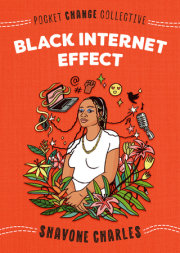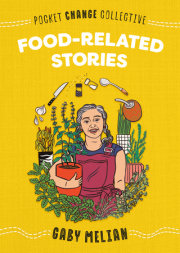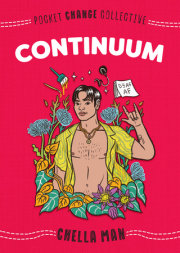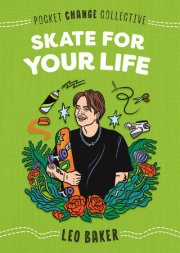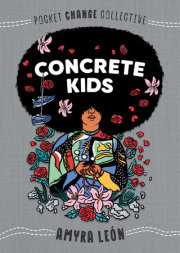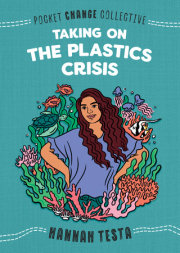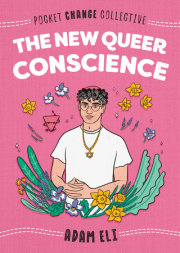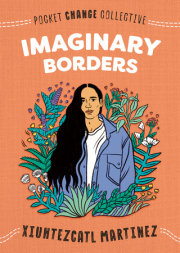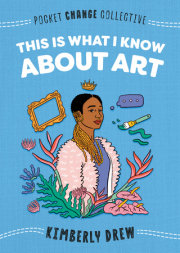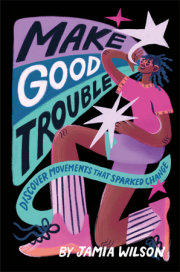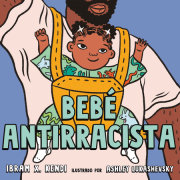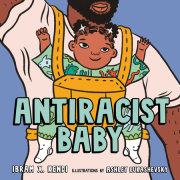Prologue
This is a book about the gender binary. Specifically, why we need to move beyond it. The gender binary is a cultural belief that there are only two distinct and opposite genders: man and woman. This belief is upheld by a system of power that exists to create conflict and division, not to celebrate creativity and diversity.
We deserve more options. This false choice of boy or girl, man or woman, male or female is not natural—it is political. The real crisis is not that gender non-conforming people exist, it’s that we have been taught to believe in only two genders in the first place.
Gender diversity is an integral part of our existence. It always has been, and it always will be.
There is a shocking disconnect between the way the government and the media speak about gender non-conforming people and the reality of our lives. This gap between representation and reality continues to get worse. As we face heightened prejudice and harassment on the ground, more policies and public statements deriding us continue to be made. This disconnect is not a coincidence; it is a calculation. This is how it has always worked: The best way to eliminate a group is to demonize them, such that their disappearance is seen as an act of justice, not discrimination.
But this
is about discrimination, and it’s time that we address it. The reality that many gender non-conforming people cannot go outside without fear of being attacked is unacceptable. The issue is not that we are failing to be men or women. It’s that the criteria used to evaluate us to begin with is the problem.
Beyond the Gender Binary
The days that I feel most beautiful are the days that I am most afraid. They tell us to “be ourselves,” but if you listen closely, there’s more to that sentence: “. . . until you make them uncomfortable.”
Be yourself until you make them uncomfortable.
There is always a limit. A breaking point. Once you cross the line, then you are “too much” and are put back in your place.
In this way, acceptance of self-expression becomes conditional. Express yourself using this template under these constraints with this time limit. Go! It’s like being handed over a Scantron sheet and demanded to paint a self-portrait on it. It’s possible, of course, but why even bother when a canvas is within our reach?
Is it really a choice when you don’t get to select the options you are given to begin with?
The other day, I left the house wearing a teal dress, purple lipstick, and a full beard. I have always—and I mean always—loved color. If you flip through our old family photo albums, it’ll feel like sifting through the pages of a fashion magazine. There I am at five years old, wearing a vibrant floral print T-shirt with fuchsia shorts, a pink lunch box, and a huge smile to top it all off.
What I like about colors is that when you mix them together, they become greater than the sum of their parts, something different altogether. No one goes around asking, “But are you really more
blue or more
green?” Teal is not blue-green, it is
teal.
But I’m getting ahead of myself here. Back to the other day. I have to admit it was foolish of me to leave the house in that dress. New York winters are unforgivingly cold, but there I was, with no coat, trekking through the streets on my way to the grocery store.
As I walked down Sixth Avenue, two people started pointing and shouting, “That’s a man in a dress! Hey, everyone! Look! It’s a man in a dress!”
I looked all around me, but I couldn’t find whom they were talking about—there were no men in dresses to be found. Besides, even if there had been, how is that remarkable, let alone an insult? It is an article of clothing! It’s like saying, “Hey, everyone, look! It’s . . . a lamppost!”
Nothing out of the ordinary here, just keep on moving.
I realized that they were, in fact, addressing me when they took out their camera phones to take some shots of me. My heart started to beat faster. My chest tightened. I turned up the music in my headphones. I walked faster.
I did not look back.
This is a disconnect I have come to know well: between what people see and
who I actually am. I have learned that the most lethal part of the human body is not the fist; it is the eye. What people see and how people see it has everything to do with power.
When I finally reached the grocery store, I still couldn’t relax.
The thing about being visibly gender non-conforming is that we are rarely, if ever, defended by other people in public. Everyone thinks that since we “made a choice” to “look like that,” we are bringing it upon ourselves. The only reason people can fathom why we would look this way is because we
want to draw attention to ourselves. They can’t even consider that maybe we look like this for ourselves, and not for other people. We are reduced to a spectacle. And when you are a spectacle, the harassment you experience becomes part of the show.
As I checked out my groceries, the person next to me in line approached.
Oh dear, here we go again. “Hey, can I ask you something?”
I started to walk away.
“Why do you dress like that?”
I stopped in my tracks. This felt like it could be genuine curiosity and not something more hostile.
As I prepared to exit the store, they came a little bit closer. My heart beat a little bit faster. They lowered their voice.
“It’s just that . . . I used to wear skirts and dresses when I was younger.”
“What happened?” I asked.
They laughed, but their eyes told another story. There are some questions that have no answers. How do you express pain when you can’t even locate the wound?
It’s like when you let a balloon loose into the sky. You don’t know where it goes, but you know it went somewhere.
Far away.
Copyright © 2020 by Alok Vaid-Menon; Illustrated by Ashley Lukashevsky. All rights reserved. No part of this excerpt may be reproduced or reprinted without permission in writing from the publisher.

